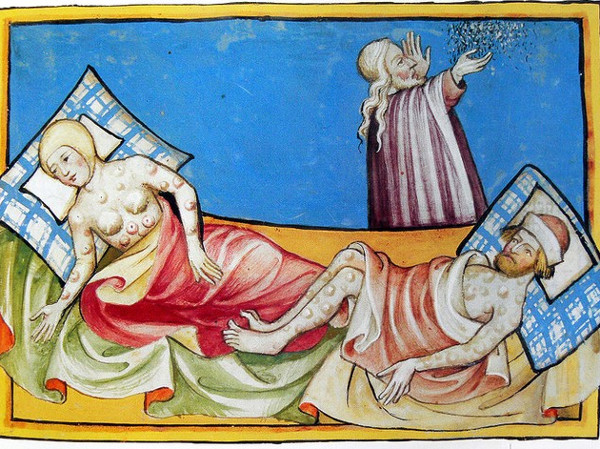This seemingly harmless bacterium killed one third of the world's population
A number of recent studies have found the cause of the "Black Death" bacterium that appears - due to a mutation from a bacterium that causes intestinal disease, which is not too dangerous.
Find out the "ancestor" of the bacteria that caused the "Black Death" pandemic
Scientists are probably no stranger to a tiny rod bacterium that once caused the Middle Ages ' famous Black Death pandemic, "sweeping" across Western Europe, causing nearly a third of the population to die. network. And after some recent research on this pandemic, we have learned a surprising fact: only a few small gene mutations are enough to turn a seemingly harmless bacterium into the stomach. "monster" mass murderer.
During the peak years, the Black Death epidemic spread so quickly that they could destroy an entire village in less than a week. Even doctors do not dare to come close to examine patients, because they fear that the disease spreads through "miasma" in the villages.

Medieval doctors carry a lot of herbs to eliminate "miasma".
This deadly pandemic came from a rod bacterium named Yersinia pestis (Y.pestis, agent of plague) , spread through rodents and fleas on their bodies. This species of bacteria is so dangerous that only 3 bacteria are enough to kill a rat in the laboratory. Considering that every bite of a tick can transmit up to 24,000 Y.pestis bacteria, it is true that human survival through the Black Death pandemic is a miracle.
Only thing, Y.pestis, is basically no different from another intestinal pathogen, but in the worst case, it only causes mild diarrhea. According to Carrie Arnold in Quanta magazine:
Recent genetic studies have found the origin of the rod bacterium causing the dangerous pandemic Black Death. Unexpectedly, the "ancestor" of this bacterium is a type of intestinal bacteria called Y.pseudotuberculosis , which causes mild diarrhea. Some people even have this bacterium without knowing it because they are too weak. However, just a few small mutations are enough to make this seemingly harmless bacterium turn into a weapon that can kill patients in less than 3 days.
In some recent studies, scientists have compared bacteria samples at two different outbreaks. Y.pestis DNA is obtained from the outbreak in London, as well as from the grave of the pandemic victims of relatively similar times. Moreover, the bacteria samples collected at the present time do not show too many changes. This study shows that Y.pestis bacteria have not mutated for too long to create more new variants.

These small mutations involve a protein called urease , found in the cell wall of bacteria, and the gene segment that regulates another protein of pestis that prevents the formation of blood clots. If this mutation does not appear, the blood clots will play a role in preventing the bacteria from causing the disease, preventing them from multiplying and spreading to other parts of the body.
- Find the culprit causing 200,000 Saiga antelope to die in a month
- Yogurt can help women prevent HIV
- Use harmless bacteria to treat harmful bacteria
- Dangerous signs should be avoided when surfing the web
- The most dangerous search keywords on the Internet
- Looking back at the past, present and future world population
- Real damage of the jellyfish threat
- Video: World population development history
- Items should not be placed in the bedroom
- Live map of global population
- The facts about hygiene habits make us fall back
- The world population officially exceeds the threshold of 7.5 billion people
 Why do potatoes have eyes?
Why do potatoes have eyes? 'Tragedy' the world's largest carnivorous life: Death becomes ... public toilet
'Tragedy' the world's largest carnivorous life: Death becomes ... public toilet Tomatoes were once considered 'poisonous' for 200 years
Tomatoes were once considered 'poisonous' for 200 years Detecting microscopic parasites on human face
Detecting microscopic parasites on human face